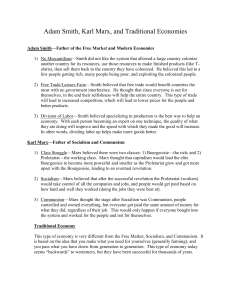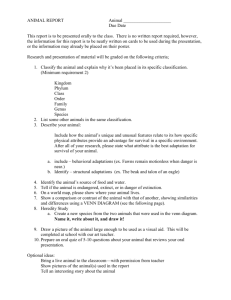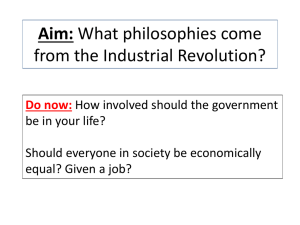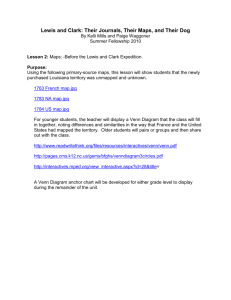TEAM Lesson Plan Template
advertisement
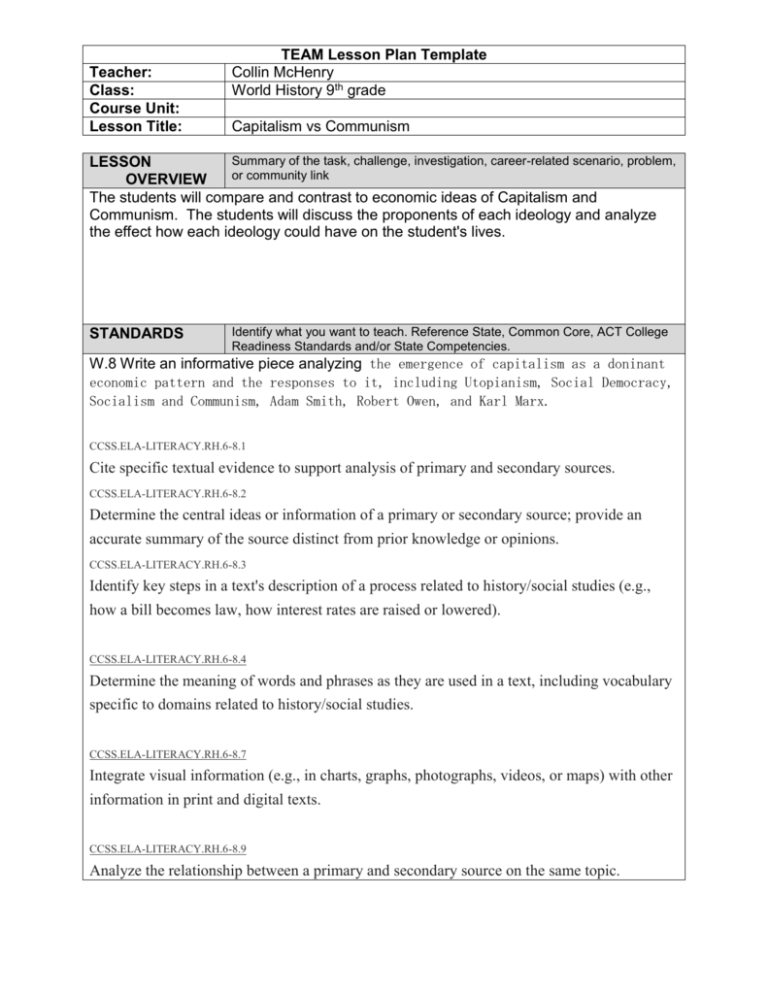
Teacher: Class: Course Unit: Lesson Title: TEAM Lesson Plan Template Collin McHenry World History 9th grade Capitalism vs Communism Summary of the task, challenge, investigation, career-related scenario, problem, LESSON or community link OVERVIEW The students will compare and contrast to economic ideas of Capitalism and Communism. The students will discuss the proponents of each ideology and analyze the effect how each ideology could have on the student's lives. STANDARDS Identify what you want to teach. Reference State, Common Core, ACT College Readiness Standards and/or State Competencies. W.8 Write an informative piece analyzing the emergence of capitalism as a doninant economic pattern and the responses to it, including Utopianism, Social Democracy, Socialism and Communism, Adam Smith, Robert Owen, and Karl Marx. CCSS.ELA-LITERACY.RH.6-8.1 Cite specific textual evidence to support analysis of primary and secondary sources. CCSS.ELA-LITERACY.RH.6-8.2 Determine the central ideas or information of a primary or secondary source; provide an accurate summary of the source distinct from prior knowledge or opinions. CCSS.ELA-LITERACY.RH.6-8.3 Identify key steps in a text's description of a process related to history/social studies (e.g., how a bill becomes law, how interest rates are raised or lowered). CCSS.ELA-LITERACY.RH.6-8.4 Determine the meaning of words and phrases as they are used in a text, including vocabulary specific to domains related to history/social studies. CCSS.ELA-LITERACY.RH.6-8.7 Integrate visual information (e.g., in charts, graphs, photographs, videos, or maps) with other information in print and digital texts. CCSS.ELA-LITERACY.RH.6-8.9 Analyze the relationship between a primary and secondary source on the same topic. OBJECTIVE Clear, Specific, and Measurable – NOT ACTIVITIES Student-friendly The objective of the lesson is for students to be able to compare and contrast the economic ideas of Adam Smith and Karl Marx,using primary sources by each author, and place the similarities and differences on a venn diagram. Specifically, the students will evaluate differences and similarities of Capitalism and Communism. ASSESSMENT / EVALUATION Students show evidence of proficiency through a variety of assessments. Aligned with the Lesson Objective Formative / Summative Performance-Based / Rubric Formal / Informal The students will be assessed, through a formal formative assessment, using a venn diagram. The students will show similarities and differences on the provided venn diagrams. Afterward, the students will display each group's venn diagram on a wall. The groups will discuss similarities and differences between each group's venn diagram. The informative writing will be completed as homework and collected as a formal formative assessment. MATERIALS Aligned with the Lesson Objective Rigorous & Relevant The students will be provided a copy of a venn diagram and a quotation form Adam Smith's Wealth of Nations, and Karl Marx's Communist Manifesto. Copies of exerts from both works will be provided to students. A word wall will be in place for this unit including words such as Communism, Capitalism, marketplace, free market, commodity, etc. A second bulletin board will have historical representations (photos, etc) of relevant time periods depicting working conditions, type of work, type of government in place, etc. Lecture will be presented via powerpoint, with the powerpoint slides available for review while students are completing Venn Diagram activity. Students will also review informative materials from their textbooks. Handout detailing expectations for writing assignment. ACTIVATING STRATEGY Motivator / Hook An Essential Question encourages students to put forth more effort when faced with complex, open-ended, challenging, meaningful and authentic questions. Capitalism and Communism are two economic philosophies widely adhered to, today. Which philosophy makes the most sense to you? What differences could we see in the day to day life between Capitalist countries and Communist countries? INSTRUCTION Step-By-Step Procedures – Sequence Discover / Explain – Direct Instruction Modeling Expectations – “I Do” Questioning / Encourages Higher Order Thinking Grouping Strategies Differentiated Instructional Strategies to Provide Intervention & Extension The instruction will begin with the instructor introducing Adam Smith and Karl Marx and their respective economic ideas of capitalism and communism. The instructor will then ask the class which type of economic system the United States uses. Presented via PowerPoint. The instructor will then show the differences in appearance and lifestyle between Capitalist countries and Communist countries. Visual displays of different countries involved in commerce will be displayed, along with a bulleted fact sheets. Students will be asked to give their initial impressions and state similarities/differences to other countries. Discussion of primary vs. secondary sources in preparation of giving students excerpts. Review of expectations on writing assignment. GUIDED & INDEPENDENT PRACTICE “We Do” – “ You Do” Encourage Higher Order Thinking & Problem Solving Relevance Differentiated Strategies for Practice to Provide Intervention & Extension The Students will read an excerpt from Adam Smith's Wealth of Nations and Karl Marx Communist Manifesto. The students will be put in groups of threes. The students will discuss the writings and compare and contrast the ideologies of Adam Smith and Karl Marx, using a Venn diagram. Venn Diagram will be color coded. Each student must contribute at least 2 items to Venn Diagram. Each category (Smith and Marx (differences) and overlap/similarities for each group must contain at least 2 items Teacher will circulate between groups to ensure productive discussion and to answer questions. Students will post diagrams in designated spot once completed. These will remain posted until the end of class and be used for wrap up discussion. CLOSURE Reflection / Wrap-Up Summarizing, Reminding, Reflecting, Restating, Connecting Venn Diagrams are reviewed by the class and discussed. Major economic theories are summarized. Homework assignment is reviewed. CROSS-CURRICULAR CONNECTIONS Primary vs. Secondary sources discussion. Primary source reading. Writing assignment. NOTES:


